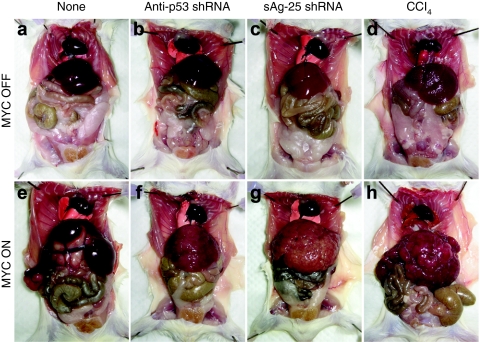Figure 4.
Cooperation of shRNAs with MYC to induce HCC. Top: representative MYC OFF mice that were (a) untreated (control for normal liver morphology), (b) injected with AAV/p53 shRNA, (c) injected with AAV/sAg-25 shRNA, or (d) repeatedly treated with CCl4. Bottom: MYC ON mice under the same conditions. Note the similar formation of diffuse HCC in the (f,g) AAV/shRNA and (h) CCl4 control groups. MYC induction alone did not cause tumors during this timeframe (3–4 weeks for all other groups); instead, tumors developed with a latency of up to 5 months and moreover had a (e) unique and distinct focal appearance. AAV, adeno-associated virus; CCl4, carbon tetrachloride; HCC, hepatocellular carcinoma; sAg, surface antigen; shRNA, short hairpin RNA.

